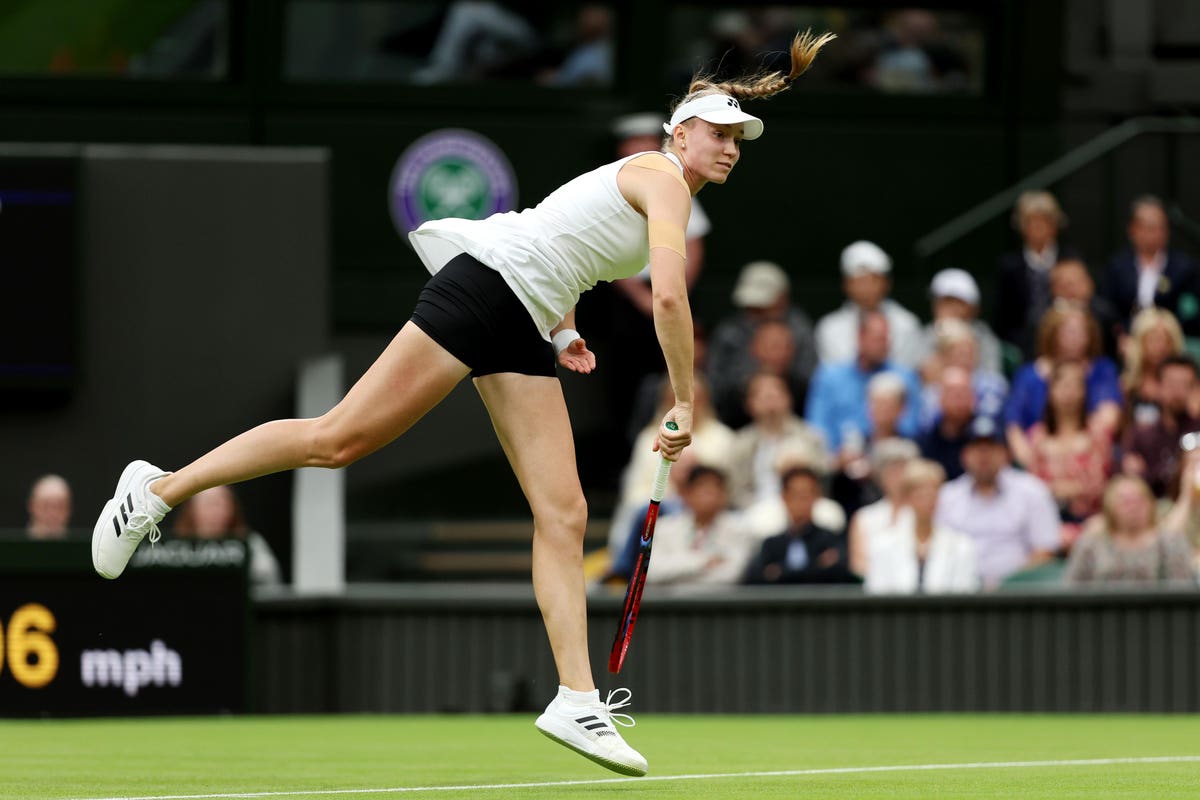Women tennis players at Wimbledon are now permitted to wear dark undershorts as long as they don’t show beneath their white skirts. The new rule was intended to reduce period anxiety for female competitors, but it has also started a welcome dialogue on worry surrounding menstrual mishaps.
Previously, Wimbledon had a strict all-white rule for clothing. But the new regulations allow for female players to wear “solid, mid/dark-coloured undershorts, provided they are no longer than their shorts or skirt.” The rule change came after protesters showed up at the women’s finals last summer demanding a change to the dress code.
The elite players expressed gratitude for the new rules and have already taken advantage. Defending Wimbledon champion Elena Rybakina of Kazakhstan played American Shelby Rogers in the opening round—and both players donned black undershorts.
British player Heather Watson also welcomed the new rule and candidly discussed the lengths she has gone to prevent any period-related embarrassment. “Last year, I went on the pill to stop myself bleeding because I knew we had to wear white undershorts. I didn’t want to face any embarrassment with that,” she told SkyNews. “This year, I knew my period was going to be during Wimbledon again, so I’m very happy I won’t have to do the same thing as last year,” she added.
In response to the new Wimbledon rule, The Athletic spoke to female tennis players about the anxiety they felt while playing during their periods in all-white. Some said that the worry was so great that they came up with signals with their support teams in the crowd to indicate if any menstrual blood was showing through their clothes.
Most people who menstruate can relate to period leakage, but professional athletes who have their every move photographed face an entirely different level of scrutiny. Emma Pallant-Browne, a 34-year-old British triathlete, was competing in Ibiza, Spain, this May when a photographer captured her running with a small blood stain showing through her pink suit. The photo went viral.
Pallant-Browne posted on Instagram that it’s just the unglamorous reality of racing during your period, and she hoped that her experience would make it easier for others to do the same. “If you wrote to me saying 99% of the women you know would be mortified at this, then that is exactly why I am sharing this because there really is nothing wrong. It’s natural, and coming from eating issues as an endurance runner when I was growing up where I didn’t have my period, I now see it as beautiful. So if you have a photo like this, save it, cherish it, remember how you performed on a tough day because one day you might just be able to help someone else with it.”
Those not in the spotlight also worry about their periods and leakage. A 2022 survey by Puma and Modibodi (who produce leak-proof underwear) revealed that three in five teen girls did not play sports due to a fear of leaking or revealing their period, and 75% never discussed their period with their coach. Another study of high school girls shows teens often adopt strategies to avoid period embarrassment at school. Keeping a hoodie in a locker to tie around your waist or an extra change of clothes was common.
Pallant-Browne is correct that talking about periods and menstrual mishaps is likely the best way to reduce the stigma and anxiety surrounding them. In addition to reducing the anxiety level of elite female tennis players, Wimbledon also started a dialogue about these issues that will hopefully help other women, girls and people who menstruate to feel more comfortable in their bodies. And it only took them 139 years to do it (women started playing at Wimbledon in 1884).
Read the full article here





